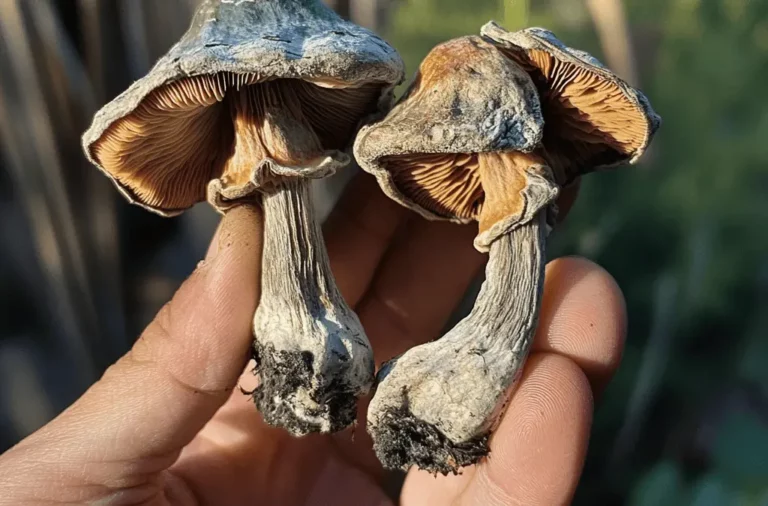The Depths of Breathwork
Introduction
Breath is the essence of life, the involuntary rhythm that sustains our existence.
The ancient practice of breathwork transforms this mundane act into a powerful tool for physical, mental, and spiritual well-being.
In this article we will uncover the roots of breathwork, explore various techniques, and gain an understanding of its intriguing connection with psychedelics, specifically focusing on psilocybin.
An Overview
Breathwork is a holistic practice that utilizes conscious control of breathing to enhance overall health and well-being.
The fundamental principle revolves around the idea that the breath is a bridge connecting the mind, body, and spirit.
By consciously altering the breath pattern, practitioners aim to induce various physiological and psychological effects.
The History of Breathwork
The practice of conscious breathwork is deeply rooted in ancient traditions and cultures, spanning across centuries and continents.
Understanding the historical evolution of breathwork provides a context for appreciating its enduring significance in contemporary holistic practices.
Yogic Pranayama
Origins:
One of the earliest and most well-documented forms of breathwork comes from the ancient traditions of India, specifically within the realm of yoga.
Yogic pranayama, or yogic breathing, dating back over 3,000 years, explores the control and regulation of breath to cultivate life force energy, known as prana.

Philosophical Foundation
Pranayama, as outlined in ancient yogic texts like the “Yoga Sutras of Patanjali,” is intricately linked to the philosophy of connecting breath, body, and mind.
The practice aims to purify the body, calm the mind, and prepare practitioners for deeper states of meditation.
Taoist Practices in China
Breath and Qi:
In ancient China, Taoist practices placed a significant emphasis on the cultivation of vital energy, referred to as “Qi” or “Chi.”
Breathwork, as part of Taoist alchemical practices, aimed to harmonize the flow of Qi through the body’s energy channels.
Balancing Yin and Yang
Taoist sages believed that conscious breathing could balance the opposing forces of Yin and Yang, promoting health, longevity, and spiritual awakening.
Techniques like “Dao Yin” involved breath control to harmonize the body’s vital energies.

Greek Philosophical Influence
Pneuma and Psyche:
In ancient Greece, the concept of “pneuma” held significance, representing breath, spirit, and life force.
Early Greek philosophers, including the likes of Empedocles and Heraclitus, explored the relationship between breath (pneuma) and the soul (psyche).
Influence on Western Thought:
The philosophical contemplation of breath and its connection to the human experience in ancient Greece influenced subsequent Western philosophical and medical traditions, setting the stage for the integration of breathwork principles in various cultures.
Indigenous Practices and Shamanic Traditions
Ritualistic Breathwork:
Indigenous cultures worldwide have incorporated breathwork into their spiritual and healing practices.
Shamanic traditions, in particular, often involve rhythmic breathing and chanting to induce altered states of consciousness, allowing shamans to commune with the spirit world.

Breathwork as a Catalyst:
Shamanic breathwork has been used as a catalyst for visionary experiences, facilitating communication with ancestors, spirit guides, and the natural world.
These practices highlight the universal recognition of breath as a conduit to altered states and spiritual realms.
Modern Revival and Integration
20th Century:
The resurgence of interest in breathwork in the 20th century can be attributed to pioneers like Wilhelm Reich, who explored the connection between breath and emotional well-being.
Stanislav Grof, a psychiatrist, introduced Holotropic Breathwork as a therapeutic modality, emphasizing the potential for healing through altered states induced by breath.
Integration into Holistic Practices:
In recent decades, breathwork has found its place in the toolkit of holistic wellness.
With diverse techniques ranging from Transformational Breathwork to Rebirthing, modern practitioners draw from ancient wisdom while adapting and integrating breathwork into contemporary therapeutic and spiritual contexts.
Understanding the historical backround of breath work, reveal its enduring presence as a universal practice that transcends cultural and temporal boundaries.
We stand on the shoulders of ancient traditions that recognized the profound impact of conscious breathing on the human experience.

A Brief Synopsis: The Potential Health Benefits
Research into breathwork has gained momentum in recent years, suggesting that techniques, such as controlled breathing and rhythmic patterns, can positively influence the autonomic and central nervous system, reducing stress and promoting relaxation as well as improving other health conditions.
A 2017 study published in the “Journal of Clinical Psychology” demonstrated that conscious breathing interventions were effective in reducing symptoms of anxiety and depression.
A 2020 review published in “Frontiers in Psychology” highlighted the potential of breathwork in enhancing cognitive function and emotional regulation.
Additionally this year, there was a meta-analysis conducted that concluded breathwork may be associated with lower levels of stress and anxiety compared to the control group.
These findings underscore the therapeutic potential of breathwork, offering a scientifically supported avenue for individuals seeking holistic approaches to mental health and self-discovery.
Breathwork Techniques
Somatic Breathwork
Overview:
Somatic Breathwork is a holistic approach that combines breath awareness with a deep connection to bodily sensations.
Rooted in the understanding that the body holds emotions and memories, this practice encourages individuals to explore the intricate relationship between breath and physical sensations.
Technique:
Practitioners focus on breath awareness, emphasizing the connection between inhales and exhales with bodily experiences.
By tuning into sensations, individuals can release tension, promote relaxation, and unlock emotional blockages.

Benefits:
Somatic Breathwork is particularly effective for stress reduction, emotional healing, and enhancing mind-body integration.
It cultivates a heightened awareness of the present moment, fostering a sense of groundedness and tranquility.
Transformational Breathwork
Overview:
Transformational Breathwork is a dynamic and structured practice designed to facilitate personal growth and self-discovery.
It emphasizes continuous, connected breathing patterns to awaken dormant energy and unlock emotional and spiritual potential.
Technique:
Participants engage in a specific breathing pattern, often a rhythmic and connected inhalation and exhalation.
This sustained breath cycle is believed to activate the body’s innate healing mechanisms and catalyze personal transformation.

Benefits:
Transformational Breathwork is known for its ability to induce altered states of consciousness, promoting emotional release, increased self-awareness, and a sense of empowerment.
It is often used as a tool for personal development and spiritual exploration.
Rebirthing Breathwork
Overview:
Rebirthing Breathwork centers around the idea of symbolic rebirth, allowing individuals to revisit and release memories associated with their birth and early life experiences.
By consciously altering the breath, practitioners aim to clear emotional blockages and foster healing.
Technique:
The primary technique involves conscious connected breathing, where participants maintain a continuous and rhythmic breath cycle.
This sustained breathwork is believed to bring unresolved emotions to the surface, allowing for acknowledgment and release.

Benefits:
Rebirthing Breathwork is recognized for its therapeutic benefits, aiding in the release of trauma and emotional baggage.
It can lead to a profound sense of renewal, self-acceptance, and a release of limiting beliefs.
Shamanic Breathwork
Overview:
Shamanic Breathwork draws inspiration from ancient shamanic practices and rituals.
This technique incorporates rhythmic breathing, often accompanied by music, to induce altered states of consciousness and facilitate spiritual exploration.
Technique:
Practitioners engage in intentional, rhythmic breathing, guided by music or drumming.
This rhythmic pattern is thought to induce a trance-like state, allowing individuals to access deeper layers of consciousness and connect with spiritual dimensions.

Benefits:
Shamanic Breathwork is associated with spiritual awakening, expanded awareness, and a sense of unity with the cosmos. It is often used for personal transformation, inner healing, and accessing the wisdom of the subconscious mind.
Incorporating these diverse types of breathwork into one’s wellness routine offers tools for self-discovery, healing, and personal growth.
Each method provides a unique entry point into the exploration of the mind-body connection, offering individuals the opportunity to choose the approach that resonates most deeply with their personal journey.
Holotropic Breathwork
Overview:
As mentioned earlier, Holotropic Breathwork was developed by psychiatrist Stanislav Grof and his wife Christina.
The term “holotropic” is derived from the Greek words “holos” (whole) and “trepein” (moving toward), reflecting its goal of moving towards wholeness.
Technique:
Holotropic Breathwork is a transformative breathwork technique that combines deep, rhythmic breathing with evocative music and focused bodywork.
Participants engage in a controlled breathing pattern, facilitating an altered state of consciousness conducive to self-exploration and healing.

Benefits:
Holotropic Breathwork aims to access the unconscious mind, allowing suppressed emotions and memories to surface.
This approach has been associated with profound spiritual experiences, emotional catharsis, and a sense of interconnectedness.
Often conducted in group settings with trained facilitators, Holotropic Breathwork provides a unique and powerful avenue for inner exploration and personal transformation.
Retreats: Immersive Experiences for Transformation
Breathwork retreats have gained popularity as immersive experiences that allow participants to dive deep into their inner selves.
These retreats often combine various breathwork techniques with other holistic practices like meditation, movement, and sound therapy.
The goal is to create a supportive environment for personal growth and transformation.
Conscious Breathing and the Psychedelic Connection
The intersection of breathwork and psychedelics opens a fascinating portal to heightened states of consciousness and expanded self-awareness.
Specifically, the connection with psilocybin, a powerful psychedelic compound found in certain mushrooms, amplifies the transformative potential of conscious breathing practices.
How Do Breath Work and Meditation Differ?
Distinguishing Characteristics:
While these practices share common ground in promoting mindfulness, they differ in their approaches.
Meditation often involves stillness, focused attention, and silent observation of thoughts.
In contrast, breathwork is an active, dynamic practice that harnesses the breath’s power to induce specific physiological and psychological effects.
Synergies:
Both practices aim to cultivate heightened awareness, but the synergy between breathwork and psychedelics suggests that the dynamic nature of conscious breathing may serve as a complementary tool to enhance psychedelic experiences.
Exploring the Connection with Psychedelics
Understanding Psychedelic Experiences:
Psilocybin, the psychedelic compound in magic mushrooms, has been revered for its ability to induce altered states of consciousness, leading to profound insights, spiritual experiences, and a heightened sense of interconnectedness.
Synergy with Breathwork:
The combination of breathwork and psychedelics, often referred to as “breathwork journeys,” has gained traction.
Conscious breathing, when integrated into a psychedelic experience, is believed to intensify the effects of the psychedelic substance, amplifying the user’s introspective and transcendent journey.

Enhanced Mind-Body Connection:
The breath serves as a bridge between the conscious and subconscious mind.
When synchronized with a psychedelic experience, intentional breathing may deepen the exploration of inner landscapes, allowing individuals to navigate the depths of their psyche with heightened clarity and presence.
Facilitating Emotional Release:
Conscious breathing during a psychedelic journey can act as a catalyst for emotional release.
Suppressed emotions and unresolved traumas may surface, offering individuals an opportunity for profound healing and catharsis.
Our Psilocybin Retreat – Apply now!
Integration and Ceremony
Integration of Breathwork with Psychedelics:
The integration of breathing exercise into psychedelic ceremonies or therapeutic sessions is a mindful and intentional practice.
Trained facilitators often guide participants through specific breathing techniques tailored to enhance the psychedelic experience and support emotional processing.
Holistic Healing:
This holistic approach to healing combines the ancient wisdom of breathwork with the transformative potential of psychedelics, creating a synergistic space for self-discovery and personal growth.
Cautions and Considerations:
It’s crucial to approach the combination of breathwork and psychedelics with respect and caution. Individual sensitivities, mental health considerations, and the legal status of psychedelics in various regions should all be taken into account.
In essence, the marriage of breathwork and psychedelics offers a profound avenue for exploration, inviting individuals to embark on a journey of self-discovery and inner healing that transcends the boundaries of ordinary consciousness.
As research and practices evolve, this synergy continues to unveil new dimensions of human experience and potential.
Conclusion
In the ongoing list of holistic wellness practices, breathwork stands out as a thread connecting ancient traditions with modern practices.
From the diverse techniques to the immersive experiences of breathwork retreats, this ancient practice continues to evolve, offering profound benefits for the mind, body, and spirit.
The intriguing connection between breathwork and psychedelics adds another layer to this exploration, hinting at the vast potential for self-discovery and transformation.
As we navigate the flow of our breath, we may find that the journey is not just a physical one but a profound odyssey into the depths of our own consciousness.
Citations
- Banushi, B., Brendle, M., Ragnhildstveit, A., Murphy, T., Moore, C., Egberts, J., & Robison, R. (2023). Breathwork Interventions for Adults with Clinically Diagnosed Anxiety Disorders: A Scoping Review. Brain sciences, 13(2), 256.
https://doi.org/10.3390/brainsci13020256 - Fincham, G. W., Strauss, C., Montero-Marin, J., & Cavanagh, K. (2023). Effect of breathwork on stress and mental health: A meta-analysis of randomised-controlled trials. Scientific reports, 13(1), 432.
https://doi.org/10.1038/s41598-022-27247-y - Jerath, R., Edry, J. W., Barnes, V. A., & Jerath, V. (2006). Physiology of long pranayamic breathing: neural respiratory elements may provide a mechanism that explains how slow deep breathing shifts the autonomic nervous system. Medical hypotheses, 67(3), 566–571.
https://doi.org/10.1016/j.mehy.2006.02.042 - Rhinewine, J. P., & Williams, O. J. (2007). Holotropic Breathwork: the potential role of a prolonged, voluntary hyperventilation procedure as an adjunct to psychotherapy. Journal of alternative and complementary medicine (New York, N.Y.), 13(7), 771–776.
https://doi.org/10.1089/acm.2006.6203 - Zaccaro, A., Piarulli, A., Laurino, M., Garbella, E., Menicucci, D., Neri, B., & Gemignani, A. (2018). How Breath-Control Can Change Your Life: A Systematic Review on Psycho-Physiological Correlates of Slow Breathing. Frontiers in human neuroscience, 12, 353.
https://doi.org/10.3389/fnhum.2018.00353


